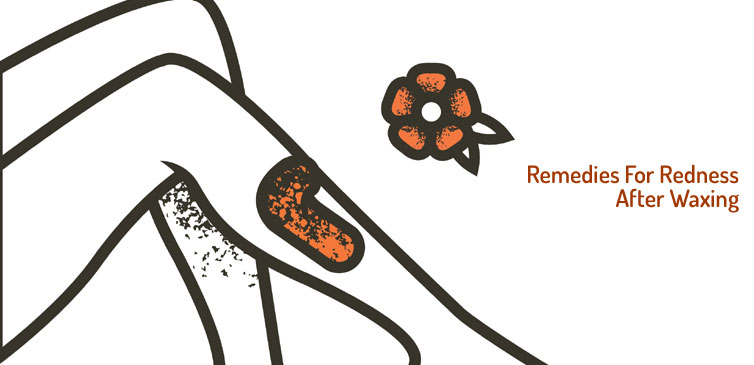Waxing is perhaps the most convenient, affordable, easiest and popular method to get rid of unwanted hair from the body. It is best suited for removing unwanted hair from the arms, legs, back, underarms and even the bikini area. It is hugely popular with women of all ages, given the affordability, and easy access – even in small salons and our very own ‘neighborhood beauty parlors’.

How Is Waxing Done?
One can get waxing done in different techniques, but it essentially involves pulling the hair from the follicles – that are below the layer of the skin. Because waxing involves stripping the hair from the follicle, it is a bit painful, but you get better, smooth skin for longer. Waxing techniques involve the application of a layer of soft or hard wax on the area and pulling it off with a cloth or a paper strip. The most common wax is made out of sugar, though the market is now flooded with flavored and more effective soft and hard waxes. Chocolate wax, gold or vanilla, green apple or Brazilian – one is spoilt for choice when it comes to choosing a wax flavor.
Common Problems After Waxing
Even though waxing is a very common semi-permanent way to get rid of unwanted hair, it can also cause skin irritation, especially in people who have sensitive skin. A lot of people go through waxing without as much as blinking an eye, but there are yet others who find the process intimidating and end up with red bumps on the areas that are waxed. Small bumps, itchiness, redness, skin irritation, pain, and sensitivity to fabrics and deodorants and perfumes are some common problems that happen after waxing.
Causes of Redness
Red, itchy blotches on the skin after a waxing session are caused due to the inflammation of the hair follicles when the waxing strip is pulled out. You will notice the skin feeling tender and red in areas that have more coarse and thick hair because they take time to get pulled off. It shows up after a few hours post a waxing session and can last for about 2-3 days. So as to avoid redness of the skin after waxing, it is important to follow pre-and-post waxing care. Neglecting post-waxing care can cause the skin to lose its shine, health, and elasticity so it is best to take a few steps yourself to get smooth and rejuvenating skin every time you wax.
Home Remedies For Redness After Waxing
Once you are out of the salon after getting waxing done and notice red bumps on the skin, it is time to turn to our very old home remedies to soothe the tender and affected skin.
1. Stay clean and dry
After a waxing session, it is important that dirt, sweat, and other impurities do not deposit on the waxing site. Dab some powder on the waxed areas and use some wet wipes to pat the area clean and dry. Stay away from sweating too much.
2. Tea-tree oil
Tea-tree oil has medicinal properties that reduce skin itchiness, redness, wounds, and tenderness and promotes easing of pain. Gently rub some tea tree oil on the waxed areas to reduce skin redness after waxing.
3. Gentle massage
Most parlors massage the skin after a waxing session to reduce the skin tenderness after waxing. If they don’t, you can yourself soothe your skin by using gentle strokes with your fingers. A massage will relax your skin and reduce the inflammation.
4. Avoid deodorants and perfumes
Deodorants and perfumes contain chemicals that can further cause inflammation of the skin and worsen reddening after waxing. They can also clog the pores of the skin causing extreme irritation and tenderness. Best avoided!
5. Aloe vera gel
Applying a thin layer of aloe vera gel on the site of waxing soothes the skin and is considered a powerful remedy to waxing side-effects. One can use the aloe vera gel for as long as desired.
6. Cold compress
Take come ice cubes and place them in a towel. Now place this towel on the affected areas, moving the compress gently in regular, circular motions. A cold compress helps soothe the inflammation and provide relief from redness and itchiness after waxing.
7. Exfoliation
Gently exfoliate the waxed skin every few days after 3 days from a waxing session. Exfoliation will remove the dead skin cells and reveal a shiny, smoother and healthier skin.
8. Loose cotton clothing
Waxing causes inflammation of the skin. The skin should be allowed to breathe and relax after the process. Friction from wearing tight clothes after waxing can further agitate the skin. Opt for softer fabrics and loose fitting clothes for a few days after waxing.
9. Raw milk
Milk contains the ever-so-important lactic acid and can provide effective relief from skin reddening after waxing. Take half a cup of raw milk, add in an equal quantity of water and make a nice solution. Now take a clean washcloth and dip it into this solution. Dab the towel on the affected area and be sure that relief is on its way.
10. Avoid heat
After a waxing session, the skin is sensitive and tender. One must stay away from hot showers and baths, or even sauna treatment as prolonged exposure to heat can cause inflammation to worsen. If you have to go out in the sun, make sure you cover yourself well and apply a good sunscreen so that the harsh rays of the sun have a minimal affect on the skin.
How To Prevent Redness After Waxing?

Essentially, to avoid skin irritation and inflammation after waxing, it is imperative that you take some steps for pre-waxing care. Preparing the skin for a waxing session can be very effective to prevent redness after it. Uprooting the hair from underneath the layer of the skin is sure to have some effects, but they can be largely provided with these simple tips:
- Check the hair growth: Before you head to the salon for a waxing treatment, make sure that the length of the hair is at least ¼ inches. Hair that is smaller than this will not be caught in the strip, or the beautician might pull the strip, again and again, to pull it out. This can cause major skin irritation.
- Avoid shower: A hot shower can sensitize the skin and make it difficult for the beautician to pull the hair out easily. Avoid taking a bath or a shower at least 2 hours before a waxing session.
- Avoid moisturizing: Moisturizing your skin can again make it difficult to pull the hair out. The skin becomes soft and pulling the hair can cause much pain and irritation. On the day you intend to take the waxing treatment, leave your skin as it is and do not use lotions or creams to soften the areas.
- Exfoliate: Exfoliating the skin will remove dirt and oil buildup from the surface of the skin. It will be easier for the hair removal process during a waxing session.
- Avoid waxing just before periods: Just a few days before your periods are due, the skin tends to be extra sensitive and most women have lower pain-tolerating thresholds. Avoid waxing during this time.
All in all, waxing is a simple and easy way to temporarily remove excess and unwanted hair from the body. It is a highly affordable way to flaunt clean, clear and shiny skin in a matter of few hours. Taking pre-and-post wax care can reduce many discomforts that arise from waxing. By taking the above steps, you can be sure only to get the best out of every waxing session.
